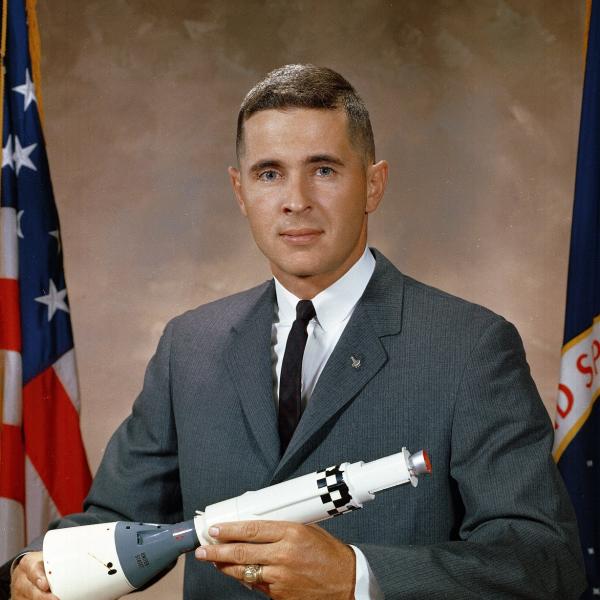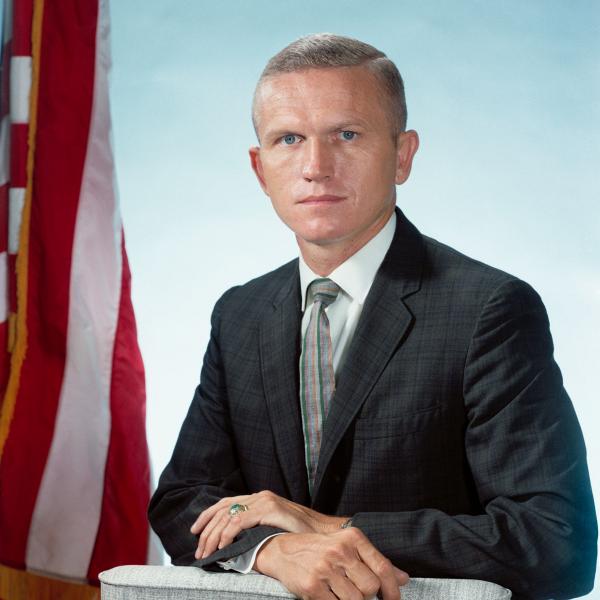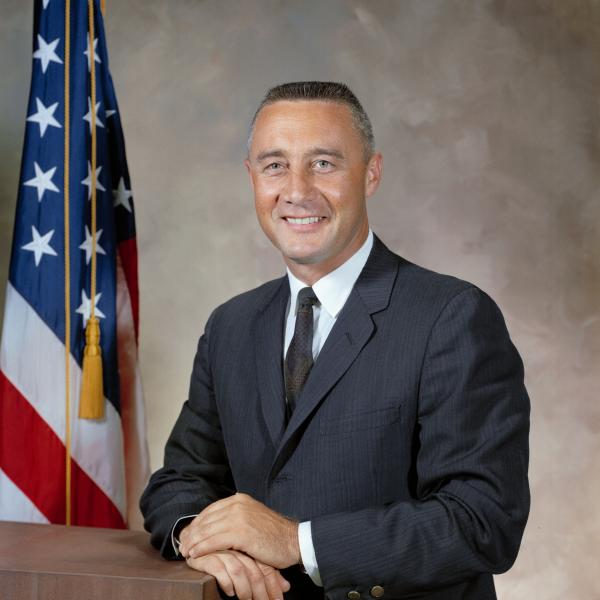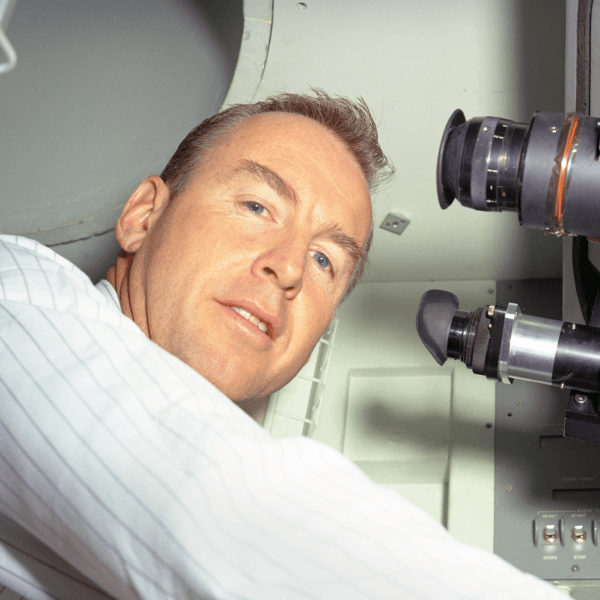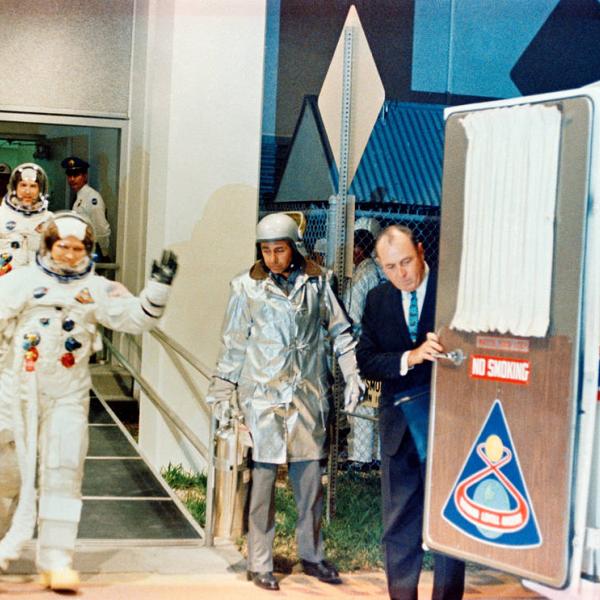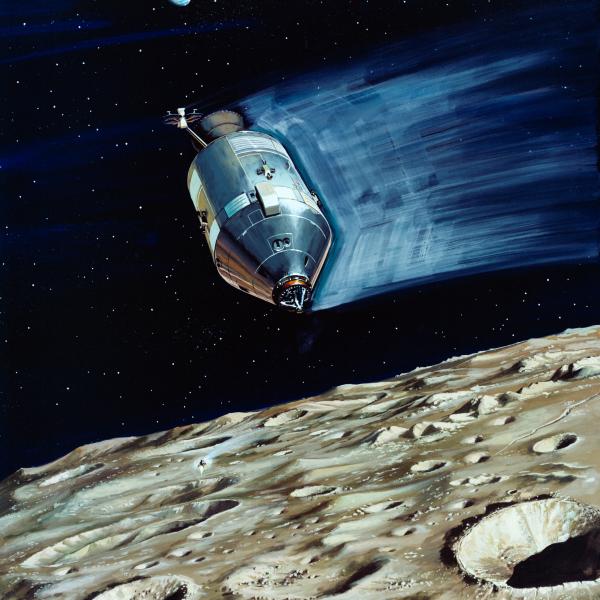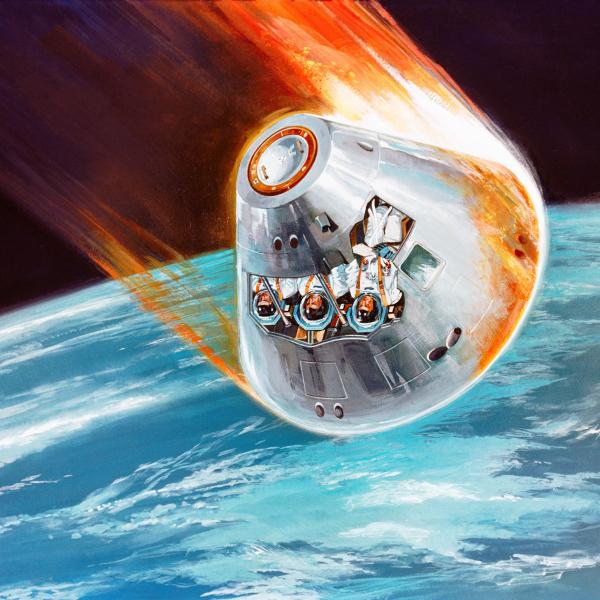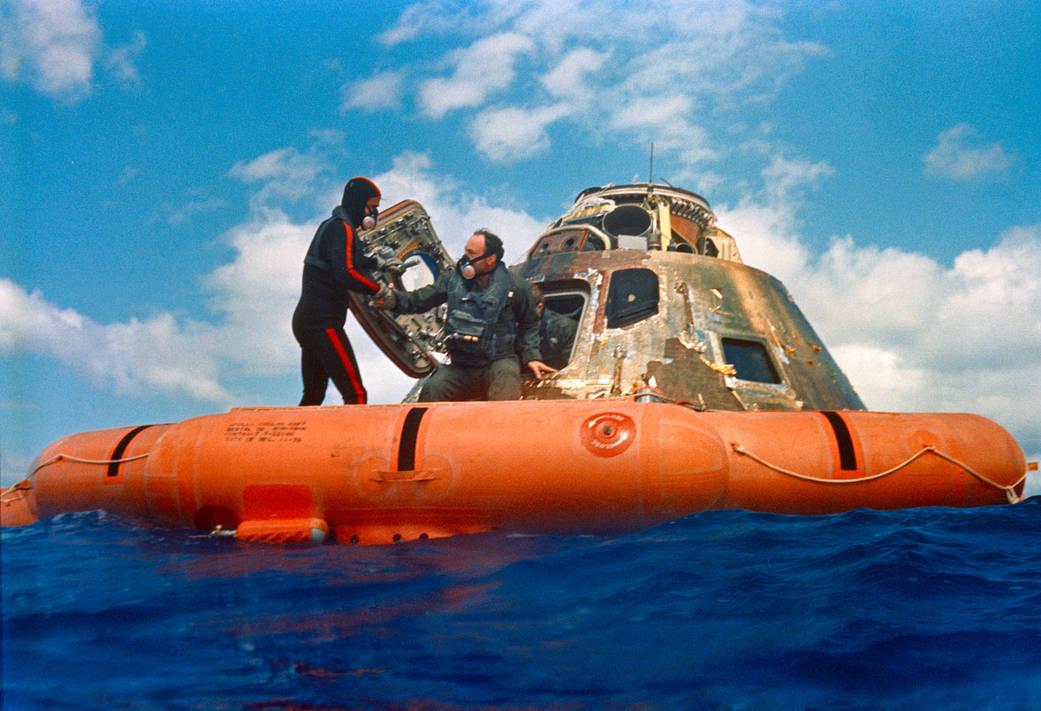
Moon Missions Splashdown
What is the most dangerous swim in the ocean?
Every astronaut for the Apollo missions survived launch, they survived the journey to the moon, they survived a lunar orbit and a moon landing, they even survived reentry into Earth’s atmosphere, but after all of that, the final splashdown still had the potential to go catastrophically wrong. If the Command Module (CM) hit the water too fast, it would crumple like an aluminum can on impact. If rescue crews were too far away, astronauts ran the risk of drowning. Gus Grissom had a close call after his Mercury Liberty Bell 7 capsule sank quickly after splashdown because the hatch door opened too soon—Grissom was rescued just in time. Engineers had to plan for every contingency to make sure the astronauts got home safe.
The friction of the Earth’s atmosphere managed to slow the Command Module, but they still needed an extra brake. The CM had three parachutes that the astronauts deployed to slow them down further. Even if one parachute failed, which happened with Apollo 15, the module was designed to work safely with only two. If the astronauts deployed too early or too late, they could end up upside down, at the mercy of the ocean. William Anders recalls that, in the Apollo 8 splashdown, “the wind blew the spacecraft and tipped it over, so we were conquering heroes from the moon hanging upside down.” To fix that, the top of the CM had several balloons and air compressors that would right the capsule with the push of a button. Once safely upright, fresh air was pumped into the spacecraft as the astronaut crew waited for rescue crews to arrive.
The ocean was a big target to hit, but it was a lot harder than it looked. Engineers calculated several possible trajectories, but they couldn't be certain where the capsule would end up when faced with the stress of reentry and the elements, so several ships waited nearby various landing sites. Depending on how close the Command Module was to the target site, it could take rescue ships minutes or hours to reach the astronauts. According to Frank Borman of Apollo 8, the “Apollo was a wonderful spacecraft but a lousy boat because not only did it go up and down but around and it was a long two hours or so until we got out of there.” While the astronauts fought to keep their lunch down with the rocking of the CM in the huge ocean swells, Navy Frogmen—a nickname given to Navy SEALS trained for astronaut recovery—and pararescue helicopters raced to reach them. The astronauts were helped from the capsule by the Frogmen and then airlifted to the nearest recovery ship. The CM was also fished out of the sea and taken back to base and analyzed by engineers for valuable data.
All 11 manned Apollo missions ended in a successful splashdown—and all astronauts returned home safely.
